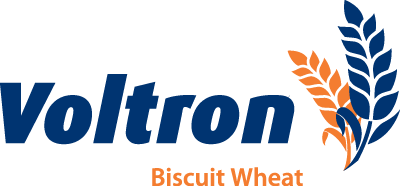Voltron Milling Wheat

- A high yielding facultative feed and biscuit wheat
- High yield potential under a wide sowing window – April until late August (no vernalisation requirement)
- Well suited to Canterbury and Southland regions including dryland sites
- Good all-round disease resistance profile and high tillering ability
Description
VOLTRON wheat is an exciting feed and biscuit wheat cultivar bred by Limagrain UK and further developed by PGG Wrightson Grain (PGW Grain). It is a mid-long season alternative type with a very wide sowing window, has a high level of leaf and ear waxiness, high tillering ability and good straw strength. VOLTRON produces soft endosperm grain that is suitable for both milling industry and feed uses.
YIELD
VOLTRON has consistently demonstrated very high stable yields across a range of trial sites throughout Canterbury and Southland and has established itself as a preferred biscuit wheat cultivar by growers. It is one of the leading cultivars for yield in the FAR Cultivar Performance Trials (CPT) in Southland and Canterbury. In the absence of sharp eyespot, VOLTRON has also been one of the highest yielding second year wheat options.
GRAIN QUALITY
|
Canterbury |
Southland |
Lower North Island |
|---|---|---|---|
| Kernel weight (1000 seed weight) | 45 | 46 | 40 |
| Test Weight (kg/hl) | 75 | 74 | 70 |
| Protein content (%) (N% x 5.7) | 10 | 10 | 11 |
| Screenings (%) | 0.8 | 1.1 | 1.7 |
| Falling number (sec) | 330 | 313 | 312 |
GRAIN QUALITY
VOLTRON produces a medium sized grain which readily achieves the low proteins desirable for biscuit making and has a high level of sprouting resistance, making it less likely to deteriorate in quality with post-maturity rainfall. This, combined with low-moderate late maturity alpha amylase susceptibility, means that it consistently achieves acceptable milling industry falling numbers.
TIME OF DRILLING
SPEED OF DEVELOPMENT
Month Planted |
Typical heading dates for VOLTRON in Canterbury |
| Late March | Early November |
| Late May | Mid-November |
| Late June | Late November |
SEED RATE AND TILLERING CHARACTERISTICS
VOLTRON has excellent tillering capacity, and target plant populations should be at the low to medium end of the range for autumn wheat.
SOIL TYPE, ROTATION AND GEOGRAPHY
DISEASE RESISTANCE
VOLTRON has good resistance to Septoria leaf blotch and stripe rust and intermediate resistance to leaf rust and powdery mildew. In the 2020-2025 PGW Grain fungicide trials, VOLTRON produced moderate to high untreated yields and fungicide responses of 1.5-4.1 t/ha. Considering the disease profile, a moderate fungicide programme is recommended. However, based on 2022/23 PGW Grain trial, in areas prone to sharp eyespot, a robust T0 (Bolide or Kestrel) and T1 (addition of Amistar) as well as plant growth regulator (PGR) programme is required. Please contact your local PGW Representative for site specific recommendations.
Disease |
PGW Grain disease nursery ratings
|
|---|---|
| Stripe rust | 9 |
| Leaf rust | 6 |
| Septoria leaf blotch | 7 |
| Powdery mildew | 6 |
| Fusarium head blight | 7 |



